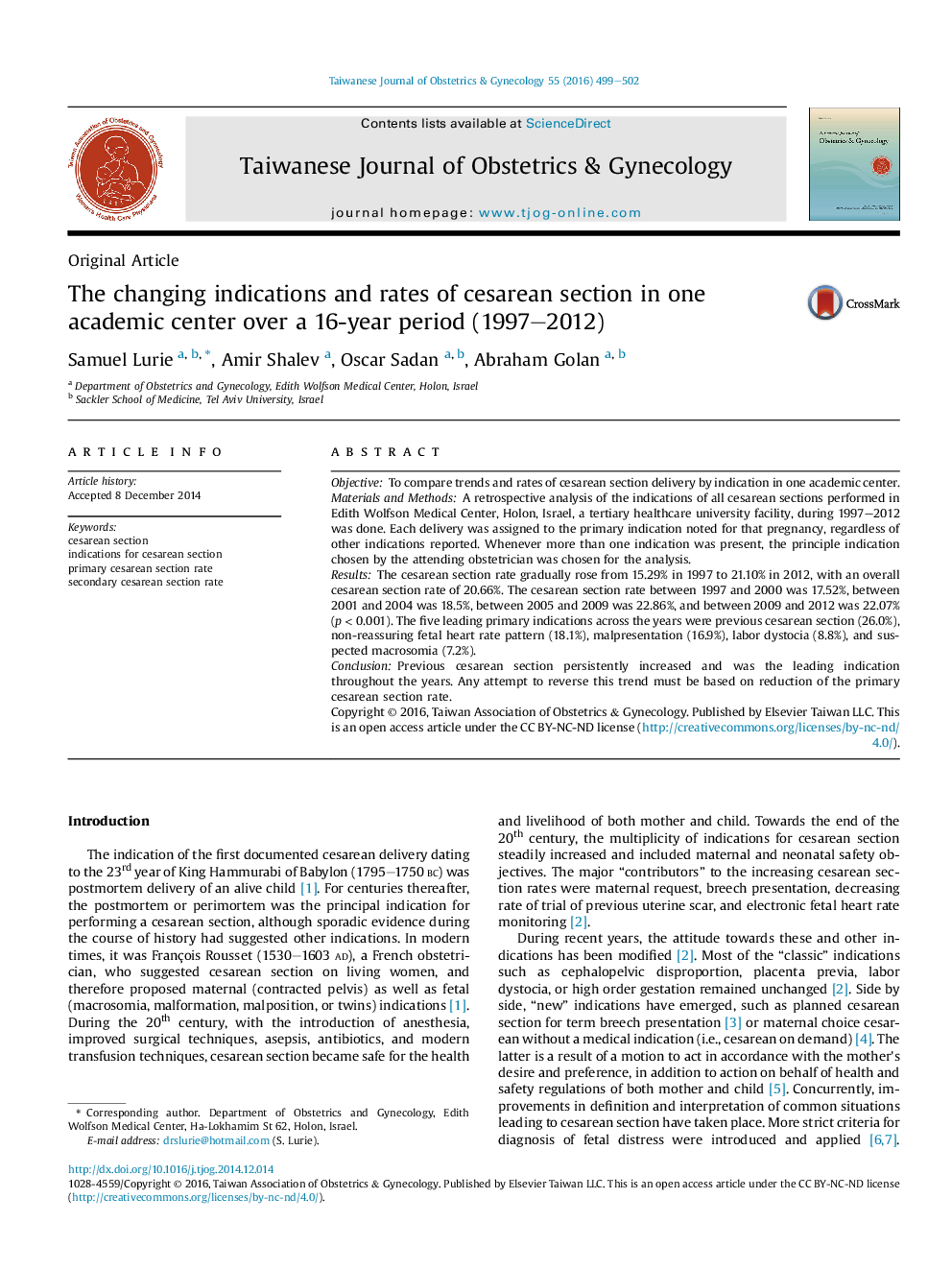| Article ID | Journal | Published Year | Pages | File Type |
|---|---|---|---|---|
| 3974877 | Taiwanese Journal of Obstetrics and Gynecology | 2016 | 4 Pages |
ObjectiveTo compare trends and rates of cesarean section delivery by indication in one academic center.Materials and MethodsA retrospective analysis of the indications of all cesarean sections performed in Edith Wolfson Medical Center, Holon, Israel, a tertiary healthcare university facility, during 1997–2012 was done. Each delivery was assigned to the primary indication noted for that pregnancy, regardless of other indications reported. Whenever more than one indication was present, the principle indication chosen by the attending obstetrician was chosen for the analysis.ResultsThe cesarean section rate gradually rose from 15.29% in 1997 to 21.10% in 2012, with an overall cesarean section rate of 20.66%. The cesarean section rate between 1997 and 2000 was 17.52%, between 2001 and 2004 was 18.5%, between 2005 and 2009 was 22.86%, and between 2009 and 2012 was 22.07% (p < 0.001). The five leading primary indications across the years were previous cesarean section (26.0%), non-reassuring fetal heart rate pattern (18.1%), malpresentation (16.9%), labor dystocia (8.8%), and suspected macrosomia (7.2%).ConclusionPrevious cesarean section persistently increased and was the leading indication throughout the years. Any attempt to reverse this trend must be based on reduction of the primary cesarean section rate.
